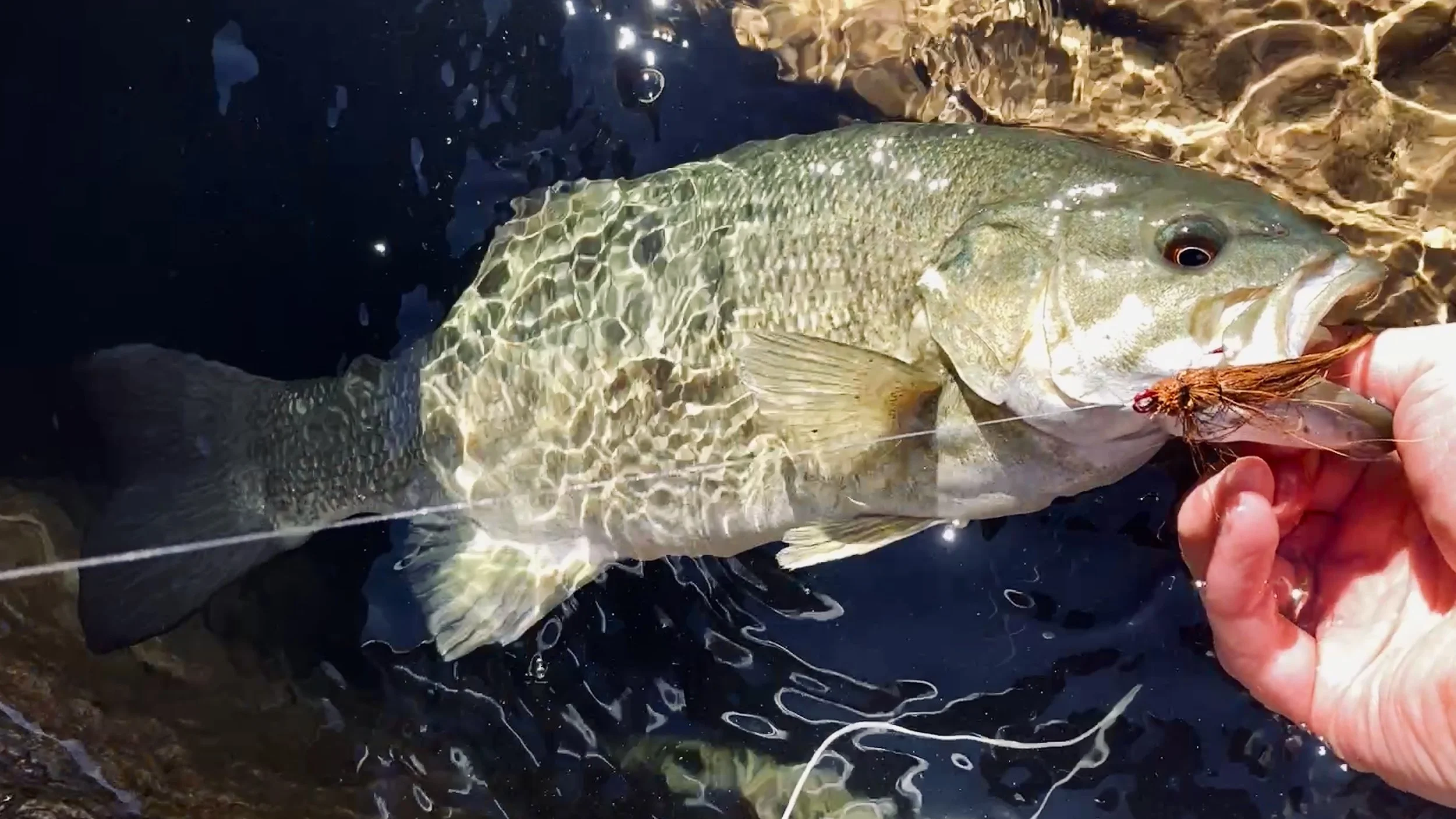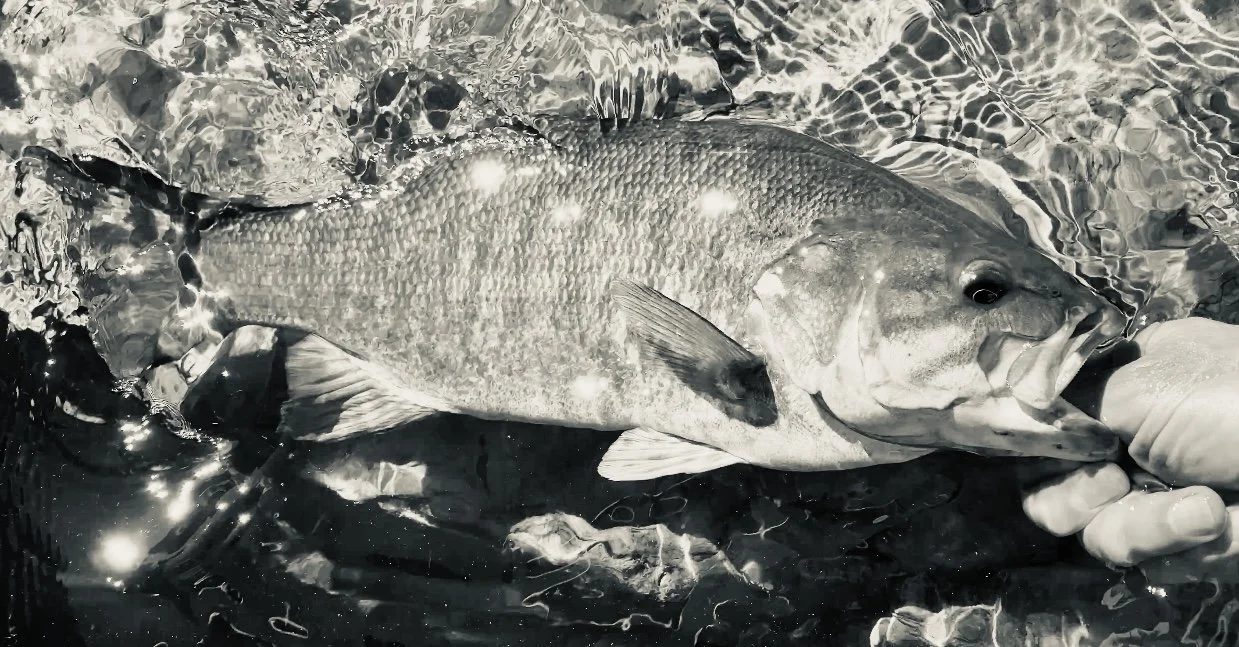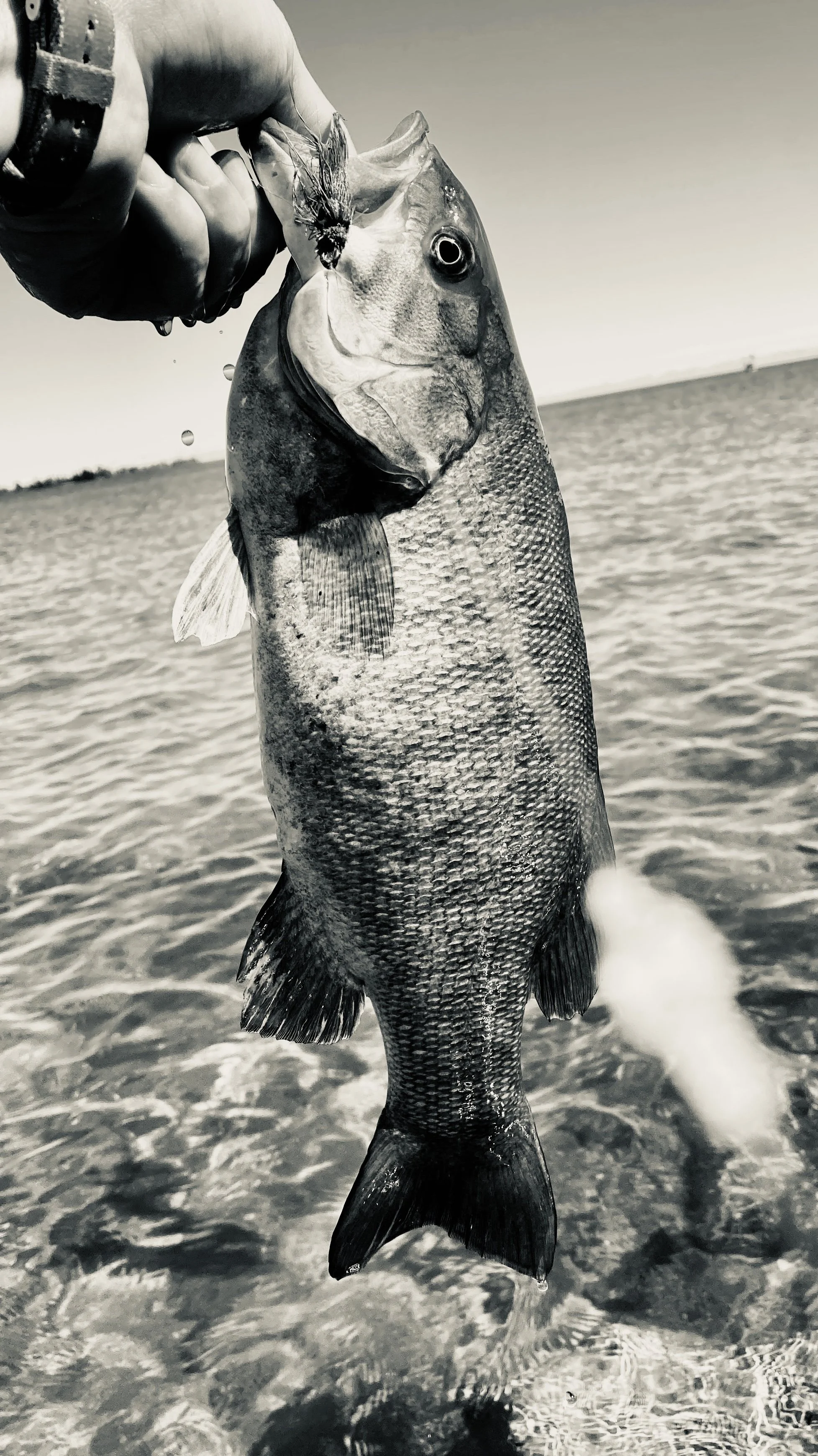The Clouser Craw
This was a happy accident.
I was tying up a big, brown, bass fly to imitate a very simple brown bucktail jig we had used on conventional tackle to catch smallies in the Adirondacks: Brown head, brown thread, brown body, with a yellow or orange eye. That was the bucktail jig. In doing so, I accidentally created a new fly, modified and built from the ubiquitous “Clouser Minnow”, that both I and the smallmouth are really liking.
The 5 main components of the fly that I find interesting, important, and make the fly unique are discussed below.
Jigs have round heads
Clousers have pointed heads.
I wanted to create a round head on a clouser.
1. Round head: I wanted a way to capture the “roundness” of a lead jighead, so I started messing with how to tie the head of a clouser, and I basically created an exaggerated “bump” on the head, which after getting all the materials on the fly, seems to “wrap” around the dumbbell eyes as though it were the same brown painted lead on a jig head.
2. Unused portion of bucktails: Ever wonder what to do with the brown part of your bucktails? Grab the hank that closely resembles the colors of the craws in your area, (purple, grey, orange, red, etc.) and use the brown from that color to tie up some craws like this. It will result in some subtle and beautiful undertones of the dyed colors, while mainly being brown, a predominant natural outer color in most crawdads in nature.
3. Uropod/Tailfin: I created the roughly cut “dungeon-style” head initially to push some water, and enable more side-to-side movement of the fly in the water, but in reality, crawdads generally swim in short straight lines/spurts. So this is the perfect blend of both…it is not kicking side-to-side as much as a true articulated-style, jerkbait type of fly, but it provides a little interest and re-direction each time a new strip is started, similar to how a crawdad might naturally evade a predator. Let’s call it a “subtle dart.” This fly darts.
Turns out, this same water-pushing head looks much like the tail fin (official name “Uropod”) of a crayfish.
4. Claws: I added the brown hackle feathers just to give the fly some dimension that the original brown jig didn't have, and it turned out making the fly version look even more like a crawdad. In the prototype stage of this fly I shared a video of it with my friends, next to the jig I was imitating, and on the basis of both of them being “brown”, my friend Frank said “those jigs look like crawdads…seems like the fish you are targeting must be eating crawdads”...Now, they seem like such an obvious and necessary inclusion.
The brown hackle feathers imitate claws, and the reverse “swim” of the fly is the same orientation as every craw...they swim backwards.
5. Flash (optional): The original jig I was imitating did not have any flashabou (just brown, brown and brown), so I would say this is optional. But I kept the flash from the original Clouser the first time I tied the fly, and with how well the fly worked I assume it adds something.
I hope you tie some up yourself, and enjoy fishing them. Or, contact me to order some and I will tie them for you.
Final note. I would think you could tie this as sparse or bulky as you like.
Hint: you would tie it bulkier, with more bucktail, if you wanted to use it in shallower water or have it sink slower. You could tie it sparser if you want it to sink faster, or if you find that the crayfish in your area are thinner bodied and not as meaty.








